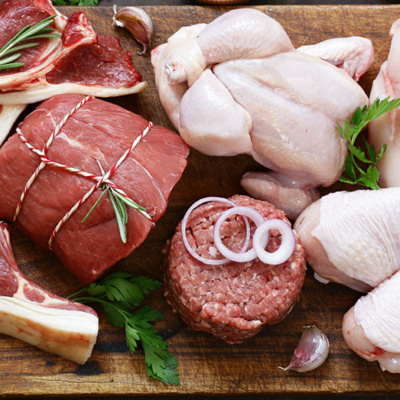top of mind news
- Growing Off-Premise Demand Drives Major Industry Changes
- The Craft Beer Varieties Kicking Pumpkin Beer to the Curb
- Americans Are Still In Love With Bacon
- Restaurants Approach CBD With Caution As Popularity Grows Like A Weed
- What Restaurants Can Lose Without Foodborne Illness Outbreak Insurance
THE FARM
Poultry
Chicken production continues to accelerate, with the chicken harvest for the week ending September 21st up 7.8% (w-o-w). Bird weights are well above those noted a year ago and caused ready-to-cook (RTC) chicken output to be nearly 5% more than last year. Production schedules are expected to remain active and should weigh on prices as the wholesale market remains well supplied. Wings and tender prices have been mostly flat recently, but retail interest remains strong across the wing complex, with prepared chicken wing ads remaining abundant. Still, lower wing prices are expected from late-October onward, while breast meat prices are expected to decline further.
Beef
Last week, total beef production was 1.6% smaller than the same week a year ago, while cattle harvests were estimated to be flat year-over-year. Beef prices may experience a few more weeks of seasonal weakness but strengthening demand typically emerges from mid-October and lasts through early-November. Out-front pricing on the ribeyes are already garnering a premium, with the 112A heavy ribeye being sold forward near $8.240 versus a $8.170 spot average. Still, it appears that the inflated late-summer beef prices are tempering seasonal price rises for several items and may limit the usual gains that history suggests.
Pork
Sharp pork production increases have occurred into late-September, with last week’s output being up 3.5% from a year ago. Wholesale pork prices have been on the rise with the belly primal leading the charge. Further upside potential is expected amongst the bellies, but emerging export interest for nearly the entire hog carcass is expected to underpin prices this quarter. ASF concerns have taken more of a backseat as of late, but with South Korea, the latest country to succumb to the disease, anticipate ASF conversations to reemerge soon.
THE SEA
Seafood
The snow crab markets remain elevated. The Alaskan Bering Sea snow crab fishing season will get underway when the quota is set in a couple of weeks. Although recent research shows that the size of the snow crabs in the Bering Sea aren’t growing as much as hoped, they are bigger, which is expected to lead to an increase in this year’s quota. This could help the supply, but fairly inflated snow crab prices are still expected this fall.
THE GARDEN
Produce
The tomato markets have softened during the past week. This occurred despite tighter tomato supplies. Total tomato shipments, including imports in the U.S. last week, fell 4.6% from the prior week and were 9% less than the same week last year. Tomato supplies could remain limited in the near term which would likely temper any further downside potential in the markets. The avocado markets continue to trade well below the highs made earlier this year. Typically, the avocado markets move lower during the next eight weeks or so.
THE KITCHEN SINK
Dairy
After seasonally peaking two weeks ago, cheese block and barrel prices fell 15% and 16.9% but have risen 4.6% and 7.4% respectively (since then). Spot butter prices are weak and just above the recently established 19-month low of $2.1025. U.S. August milk production was up .2% year-over-year due to the milk-per-cow yield being better by 1%. The milk cow herd was down .8% (y-o-y), and they reduced the herd by 2k head, making it the smallest since February 2016. Milk output gains should improve this fall but if not, the remaining seasonal price declines for dairy may be tempered.
Grains
According to the USDA, September 1st corn and soybean stocks in the U.S. were well below expectations. In the case of corn, it was 314 million bushels less. Thus, the available corn supply for the 2019-20 domestic crop could tighten considerably with just some minor adjustments to yield and harvested acreage.
Oil
Nearby ultra-low diesel fuel futures softened since last week. The EIA’s most recent weekly national average retail diesel fuel price was $3.066/gal., which was 7.4% cheaper than a year ago. Diesel fuel prices usually depreciate during the late fall.














